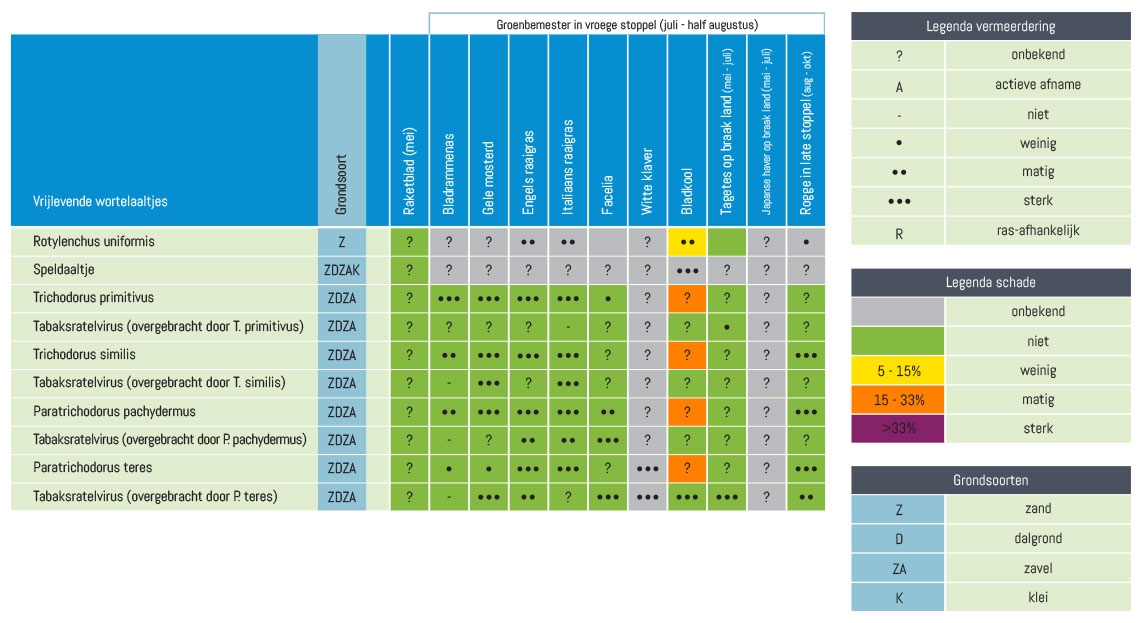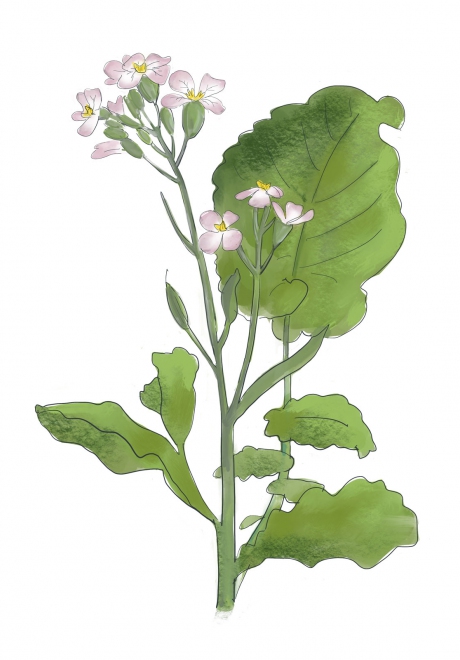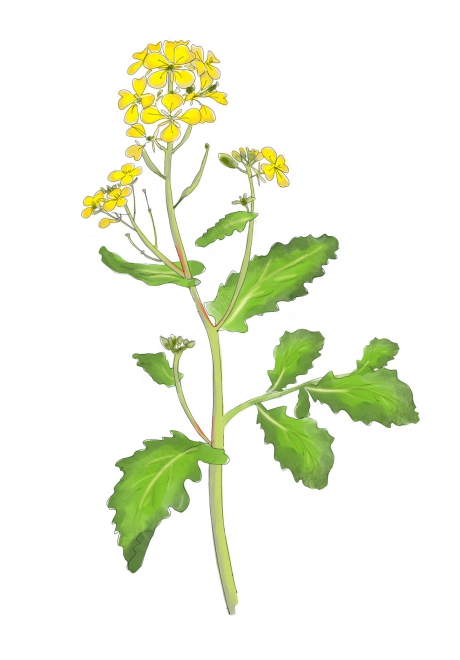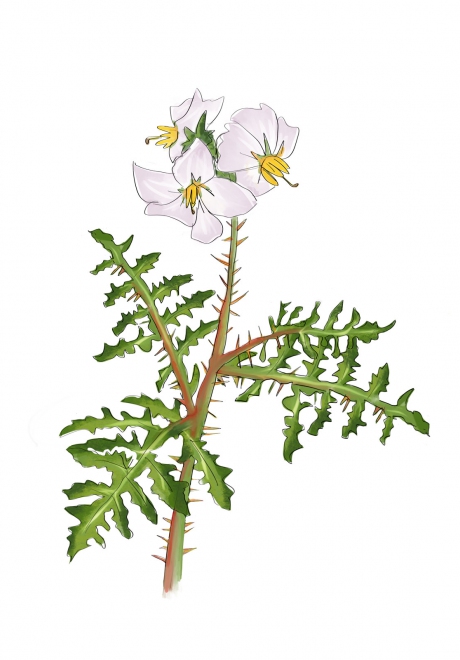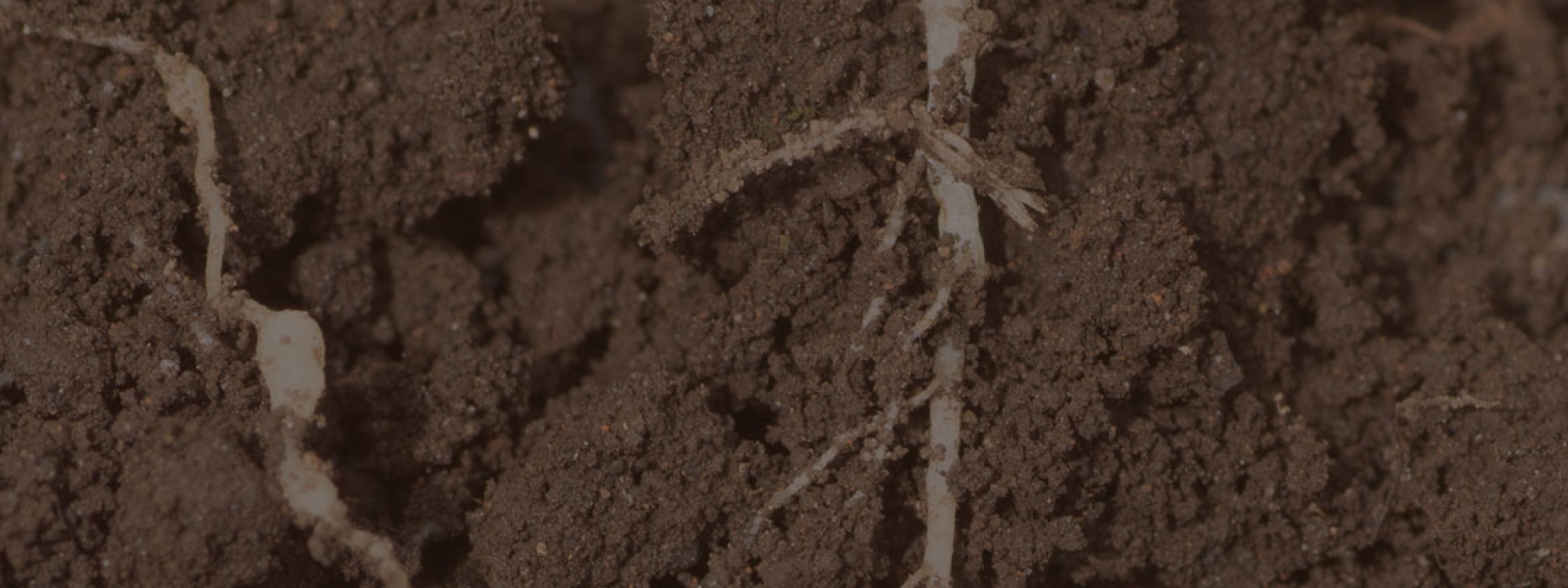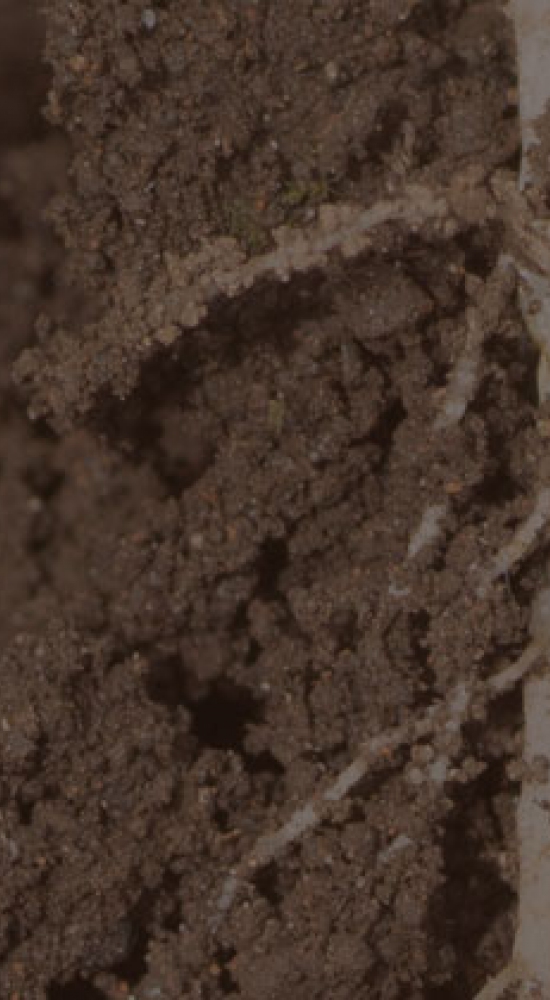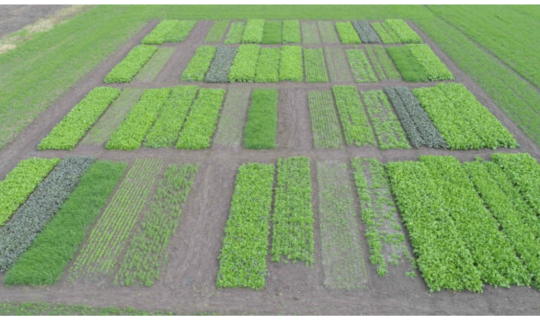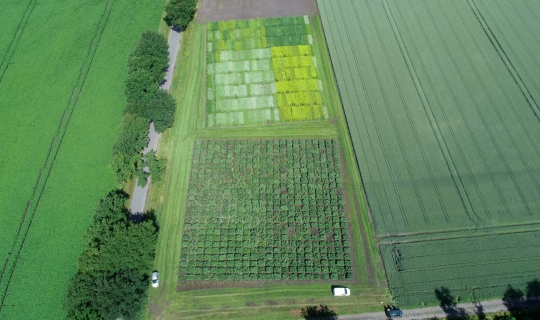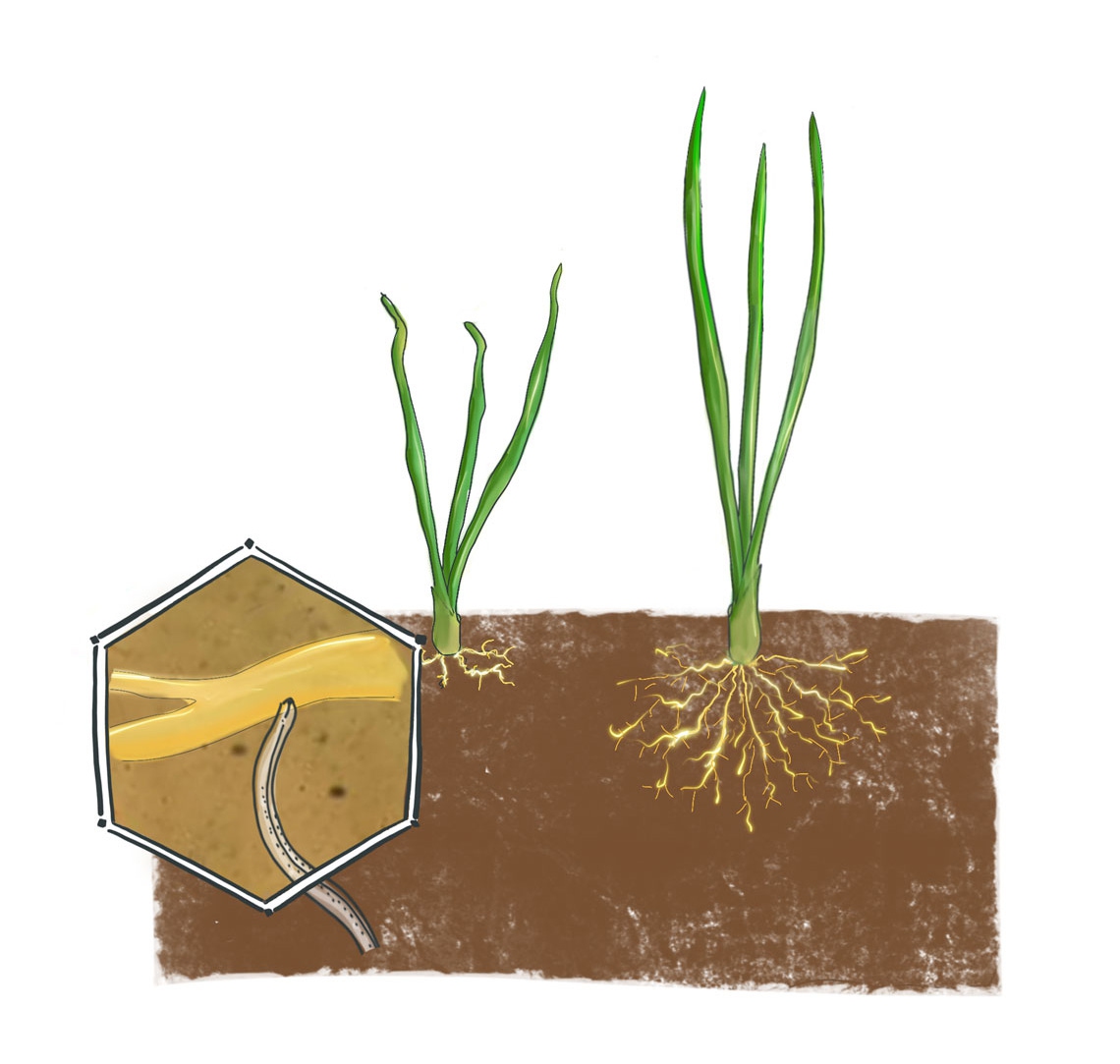
Free-living/stubby root nematodes
Free-living nematodes mainly occur on lighter clay, sandy clay and sandy soils. They do not penetrate the roots, but damage the roots by pricking them from the outside for food. Plants react with the formation of new lateral roots. The result is a bushy root system.
The free-living nematodes are able to transmit the tobacco rattle virus and the pea early browning virus if it is present in the soil. In the event of contamination, there is loss of revenue in addition to loss of quality. The free-living nematode reproduces substantially in moist soil during a cool and damp spring.
Free-living nematodes have many host plants and that makes it difficult to expand the crop rotation plan. They have a life cycle of 3-4 generations per year. After biological soil disinfection, the population of nematodes can decrease by more than 70%.
Information about the free-living/stubby root nematodes
- Irregular damage pattern with alternating healthy and damaged plants
- Stunted growth
- Transferring viruses such as tobacco rattle virus to potatoes
- Especially problems with emergence in wet and cool spring
- Company hygiene
- Soil sample research
- Increasing the pH and organic matter content can restrict damage
- Choosing the right green manure and forage
- Soil treatment with nematicide


